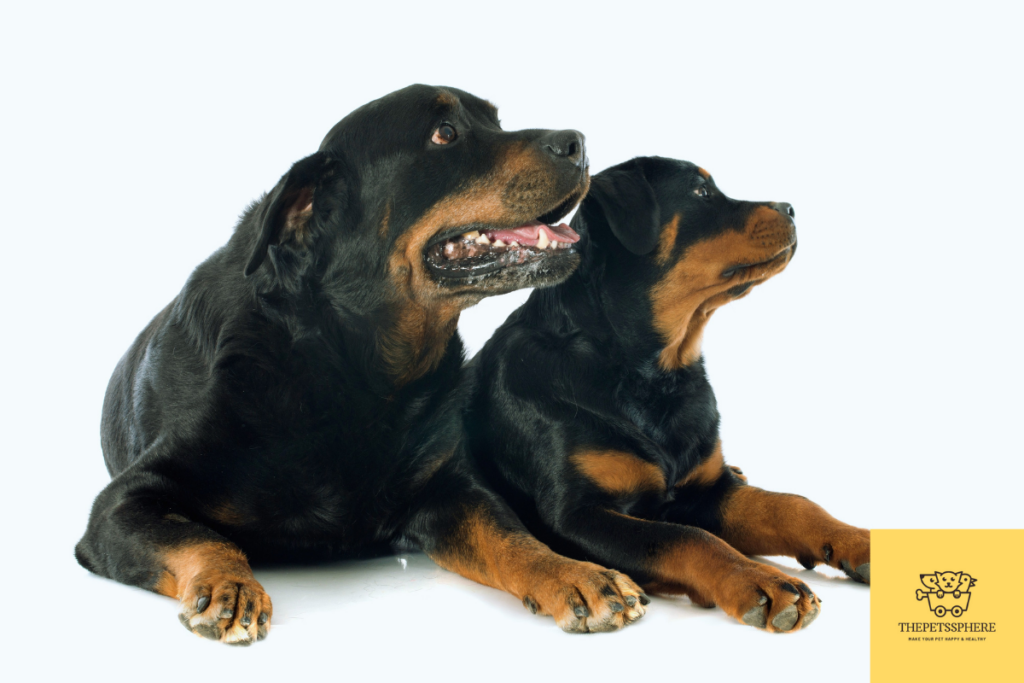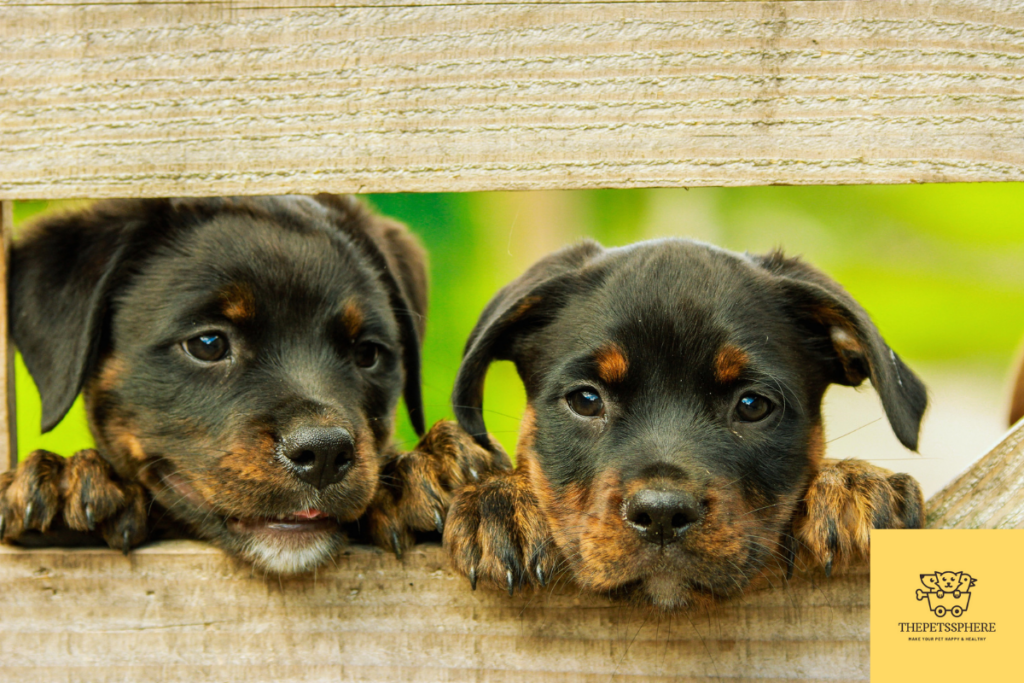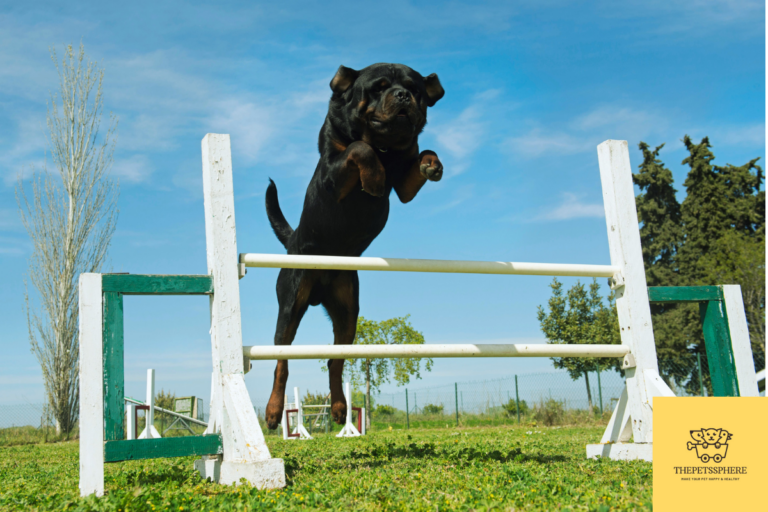Rottweilers are one of the most popular breeds in America, and it’s not hard to see why.
Rotties have a reputation for being loyal, affectionate, and gentle with children (though they’re still a large dog breed).
They are also known for their intelligence and eagerness to please. The combination of traits makes rottweilers great dogs for families that want an active pet who is also good around kids and other pets.
Rottweilers can be stubborn at times though so training them takes patience.
In this post We’ll share some tips on how to train your furry friend without too much frustration.
Are Rottweilers easy to train?
Rottweilers are known for their intelligence and eagerness to learn new things.If you are a responsible pet owner and you know what you are doing,then probably it won’t be a difficult task for you to train a rottweiler puppy.
Rottweilers are easy to train!
They are very much energetic and can be a good and obedient family dog if you consistently train your puppy from their childhood.
Like other breeds, training and socialization should be performed correctly from their childhood. We believe that training shouldn’t be a daunting task for you even if you are a first time pet owner.That’s why we have compiled 5 Easy and Practical Tips to train rotties. Now let’s discuss about that.
How To Train Your Rottweiler : 5 Easy and Practical Tips
Rottweilers are powerful and intelligent dogs.
Training a rottie can be difficult, but with the right approach it is possible!
To help you out, we’ve put together 5 easy practical tips to get you started on training your new pup.
Follow these steps properly and you’ll soon have a well-behaved Rottweiler who’s always happy to see you.
1) Start Early
The earlier in life that you train your dog, the better off he or she will be (and so will your neighbors!). Don’t wait until they’re full-grown before starting their education; if left unsupervised most puppies will chew up furniture , tear up carpeting, and more. Start teaching them the basics when they are still a pup.
2) Use Treats and Praise to reward Positive Behavior
When you are training your dog, make sure to reward him or her with a treat.
It is important that he/she knows what behavior was good and therefore should be rewarded.
The best way to do this is by saying “good boy!” or “good girl” every time they are being compliant and doing as you ask them too.
Similarly, if the pup does something wrong (like chew on furniture) then they need a correction of some kind: turn off the TV show for an hour if it’s their first offense; take away their food dish at dinner time if it happens again later in the day – dogs are more likely to want treats than mealtime!
3)Teach them commands from an early age
To train your rottweiler, you’ll need to begin teaching them commands early on.
You may want to teach the pup basic commands like “sit”, “down”, or ‘watch me’ – these are all great for getting control of larger dogs when they are out in public places. A good place to start is by practicing at home first: ask your dog to sit and then give him/her a treat as soon as he does it right! After several repetitions, introduce other forms of discipline if necessary
Teaching obedience isn’t always easy but with patience and consistency you will see improvement over time. You can also make things easier by using a training collar if your are having trouble getting their attention.
One of the best things about Rottweilers is that they are relatively easy to train, as long as you have patience and consistency on your side. They are intelligent and eager to please so it’s usually just a matter of finding out what motivates them in order for them to do something correctly. The next section will provide some tips on how you can teach commands without too much frustration!
4) Be consistent with their Training seasons
Make sure to give commands in the same tone of voice and with the same timing
Try your best to be consistent so that they are less likely to get mixed messages. For example, if you are teaching them how to sit on command then it is important for you not to yell while learning this skill but rather speak calmly as though there are no other distractions around. Be sure to practice when there are few or no other people around since this will make training easier!
5) Socialize Early
It’s better to socialize your Rottweiler puppy early on to make sure they are well-adjusted and happy.
This will also help them learn how to be around other people without feeling overwhelmed or scared which is important for their future. It’s a good idea to introduce your puppy as early as possible to new people, places, animals, experiences – everything!
Make sure that you are patient with the pup so he/she doesn’t feel overwhelmed by all of these new sights and sounds. You may want to start introducing him/her at first in small doses before gradually upping the intensity when necessary. This way they are not too intimidated or anxious about what might happen next!
Eventually it won’t matter if someone comes up to the dog and starts petting them because this will have been done at an earlier stage during the socialization process.
Training a Rottweiler can seem like a daunting task at first glance; however, these five easy tips should help break down some of the difficulties associated with training dogs. The key here is patience – don’t run out of treats too quickly and keep practicing throughout their lifespan!

Rottweiler Breed Short History
The Rottweiler breed is one of the most common breeds and it’s easy to see why.
The personality of this dog is perfect for anyone looking for a loyal, intelligent, and protective companion.
Here are some quick facts about how this breed came to be:
Rottweilers originated in Germany as working dogs.They were used by butchers because they had thick skins that protected them from cuts on their paws while pulling carts laden with meat products.
They also served as guardians of cattle herds and acted as a watchdog against thieves or other intruders who would steal livestock from farmers’ fields during the night time hours.
Rotties have always been bred to have an excellent sense of smell which made them great at tracking down lost children, escaped prisoners of war, or criminals.
The American Kennel Club recognizes them as one of the most intelligent breeds, ranking them 9th out of 157 breeds for obedience.
They are also friendly around children making them a perfect companion for families with small kids that are always on the move!
–
Are Rottweilers Friendly With Strangers?
Rottweilers are often stereotyped as being aggressive and unfriendly.
This is not always the case.
Like other breeds of dog, rotties can be aggressive if not properly socialized with humans or other dogs at an early age.
But there are a few things that can help to make your rottweiler more welcoming of strangers!
Try introducing them to new people by bringing them over for a short visit first- this way they can get comfortable with the person before meeting in person.
Reward your dog for good behavior with treats or praise, and remember that it’s ok if sometimes they don’t want to be pet because sometimes dogs just need space.
How to Control a Rottweiler’s Aggression?
Rottweilers are known for their aggression. They were bred to hunt large game, and this has an impact on them as pets! Rottweiler’s can be loving and affectionate when they know you’re the leader. The key is knowing how to control rottweilers’ aggression by training him so he knows his place in your pack. Here’s what you need to do:
1) Find a good trainer who will teach you how to take charge of your new pup.
2) Get a reliable dog leash or harness that allows you to have complete control over him.
3) Be assertive with your dog- don’t let him push you around just because he’s bigger than you! You’ll regret it when he’s full-grown and you are no match for his power.
You can also train your dog to obey commands by using positive reinforcement such as treats or praise.
Ultimately, it is up to the owner of a Rottweiler to control this breed before they are too big! Once again, be patient with your pup so that they don’t feel overwhelmed in their new surroundings. Training him/her will then become easier because rotties are highly intelligent dogs who are eager for lifelong learning opportunities!

Is a Rottweiler a Good First Dog?
The answer to the question of whether a Rottweiler is a good first dog depends on your lifestyle. If you’re looking for an active, loyal and protective companion who doesn’t need much grooming then this breed would be perfect! However, if you live in an apartment with no yard and have little time to spend outside with your pet, consider another breed that will suit your needs better. To help you decide which type of rottie might be right for you, we’ve compiled some helpful information about different types of rottweilers below:
The Standard or “show” Rottweiler is more mellow than other types but still makes a great guard dog due to their large size. They are very intelligent and are easy to train;
The Rottweiler that is considered “tough” or a “guardian rottie,” are more prone to aggression. They are often larger than other types of rotties, with thicker coats which require more grooming. If you are looking for an active dog who will be your best friend then this might not be the type of rottie for you!
Both males and females can show aggressive tendencies so it’s important to socialize them early on in life by introducing them to new people (and animals too)! This way they won’t feel overwhelmed when meeting someone new as adults later on down the road.
When walking these dogs around town, always have safety first: keep your dog on a leash, carry spray and know how to use it.

